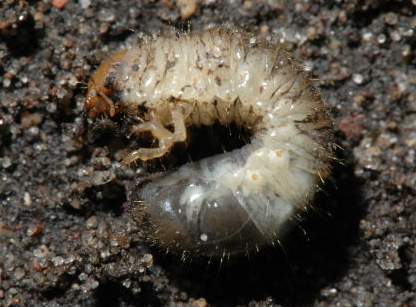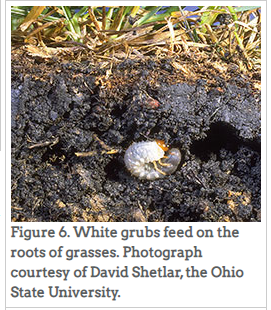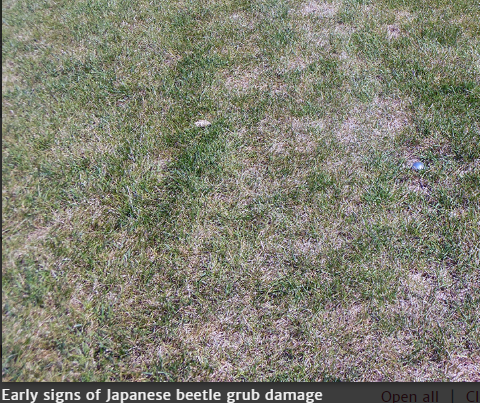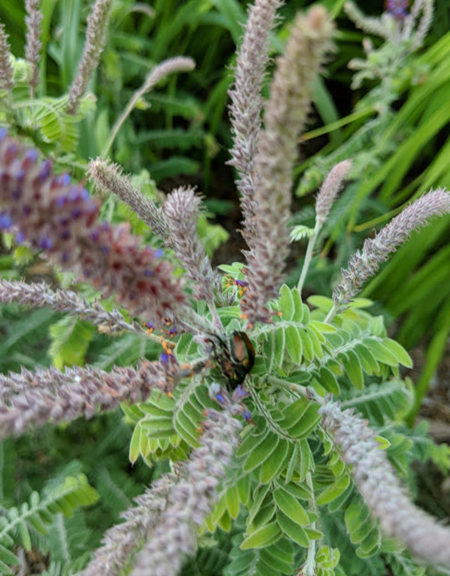Click below to listen to my 2 min. Garden Bite radio show: Japanese beetle and the deep freeze
The University of Minnesota Extension noted that we had the coldest January we’ve had in 8 years. So how did the Japanese Beetle fare? After all, the little grubs live in the soil all winter. I’m hoping they froze their you-know-whats off…

As temperatures cool off in the fall, the grubs burrow into the soil, about 2 to 6 inches. They’ll tunnel even deeper if the soil gets too cold during the winter. So what does the U say about these little enemies? Unfortunately, they likely did NOT freeze their little you-know-whats.

The grubs are a few inches down in the soil, which itself is underneath snow, an insulator. We know from studies that Japanese beetle grubs can survive down to around 9°F.

While we’ve been much colder than that, especially when considering wind chill, it’s a different story a few inches underground. The Minnesota Department of Agriculture has a series of stations that collect soil temperature data.
Soil temperatures hover anywhere from 20 to 30 degrees, while the air temperature is much colder and fluctuates wildly.

Based on what we know about Japanese beetles and soil temperatures, many grubs likely got through January just fine, and many will hang on long enough to emerge as adults next summer. Dang it…

I did spread grub control at the appropriate time last year and HAD hoped that it may have done the job. HOWEVER, further reading information from the UofMN, says that grub control will only make a difference for your lawn, not the adult beetles. Here is a link to the full information and here is an excerpt:
If your lawn has a recent history of grub damage, you may wish to treat with a preventive insecticide in June or early July (see below) to help ensure that the lawn is not damaged again.
If you adopt a “wait and see” approach, and discover in summer that your lawn has become infested, a curative insecticide can be applied in late July to mid-September when the grubs are still relatively small (1/2 inch or less). Yellowing or browning grass in August is an early symptom of white grub damage. There are other possible causes for discolored turf so check under the grass to make sure it is due to white grubs.
Once white grubs are nearly full-sized (about 1 inch long), and the turf has begun dying in patches that pull easily from the soil, you can still apply a “rescue” treatment with a fast-acting curative insecticide in September, but expect only partial control. Once the grubs have stopped feeding and started to move downward in late fall, insecticides are not effective against them.
Do not treat in spring because the large grubs are hard to kill, they feed for a relatively brief time and rarely cause damage in the spring. Treating in spring is no guarantee that the lawn will not be re-infested again in mid-summer.
